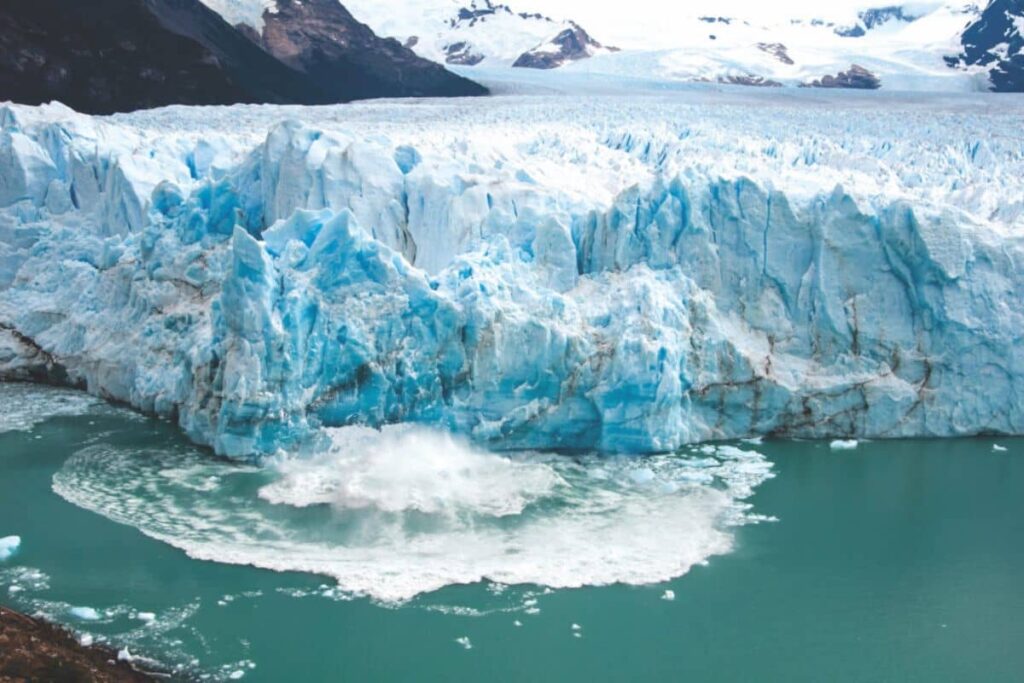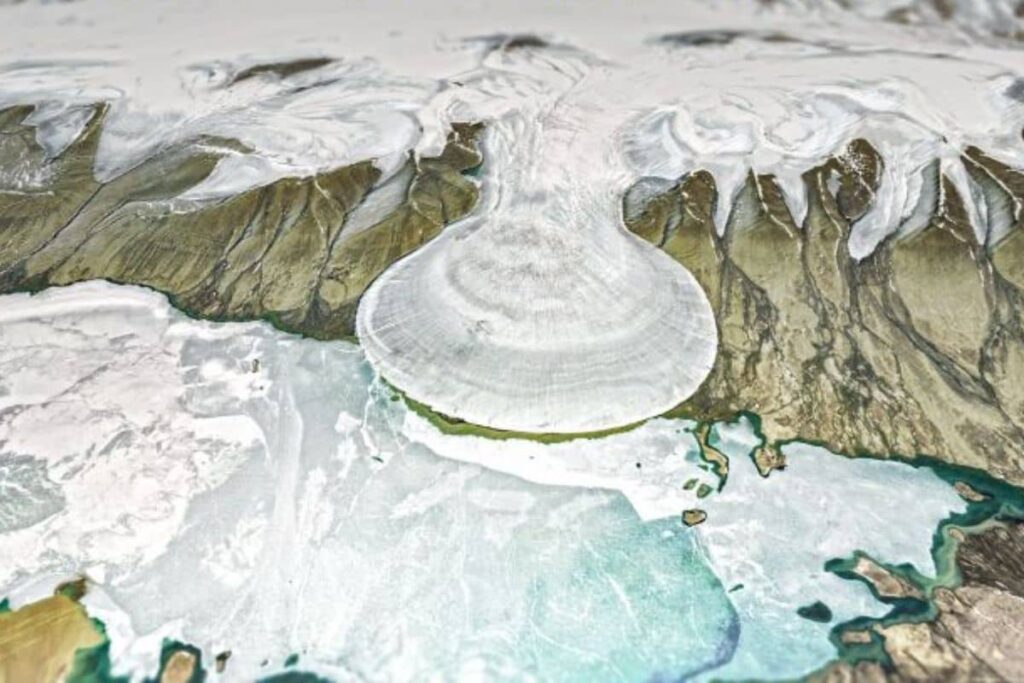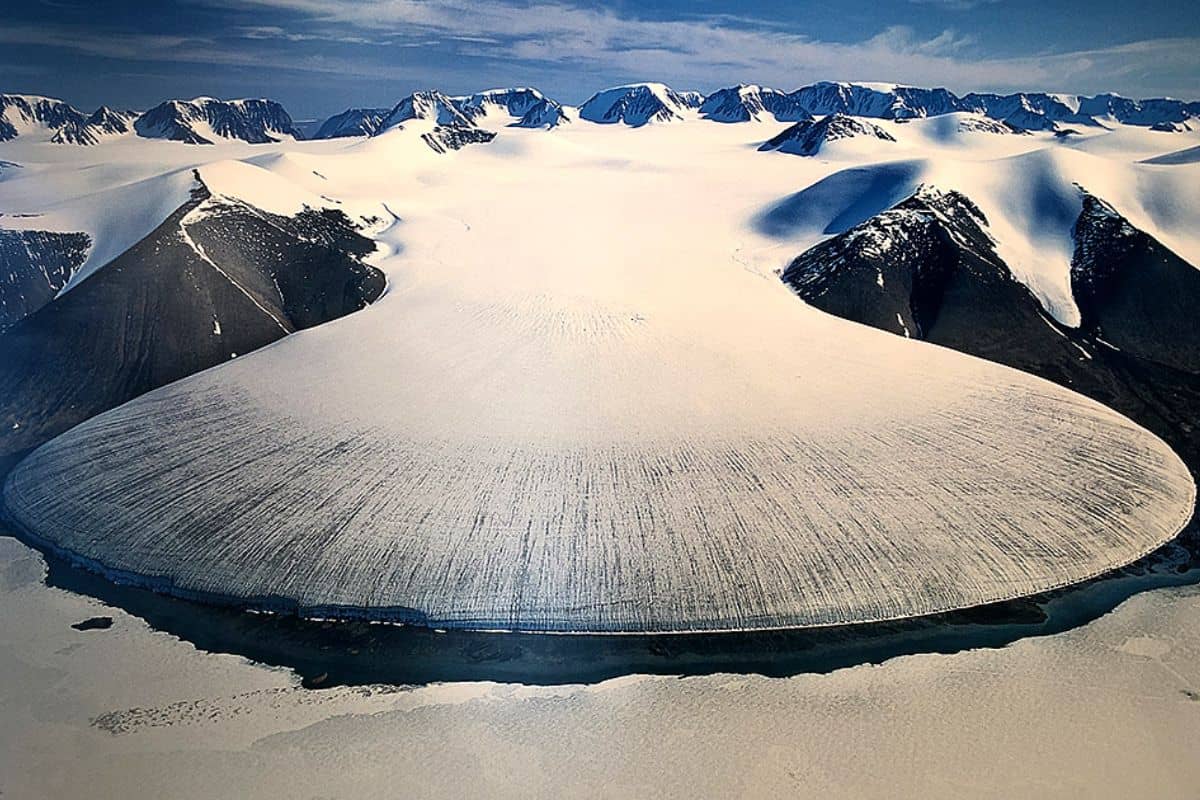Elephant Foot Glacier in Greenland is not deadly. Its unique shape resembles an elephant’s foot, attracting scientific interest.
Elephant Foot Glacier, located in Greenland, is renowned for its distinctive appearance. Shaped like an elephant’s foot, it captivates both scientists and tourists. This glacier is primarily a topic of interest due to its unusual structure and the insights it offers into glacial dynamics.
The glacier itself poses no direct threat to human life. However, its behavior and changes can provide crucial information about climate change and glacial movements. Scientists closely monitor it to understand the broader impacts on global sea levels. The glacier’s study helps predict future environmental changes, making it significant in the realm of climate science.
Elephant Foot Glacier: A Natural Marvel

Elephant Foot Glacier is in Greenland. It is located in the far north. The glacier looks like an elephant’s foot from above. This unique shape is due to its ice flow patterns. The glacier is part of a larger ice sheet. This ice sheet covers most of Greenland.
The glacier’s ice is bright white. It sparkles in the sunlight. Large cracks can be seen on its surface. These cracks are called crevasses. Some crevasses are very deep. They can be dangerous to explorers. The glacier is surrounded by rocky mountains. These mountains add to its beauty.
Origins And Significance
Elephant Foot Glacier got its name from its shape. Early explorers noticed it looked like an elephant’s foot. This glacier is in Greenland. It has been there for many years. People have studied it for a long time.
The Elephant Foot Glacier has a big impact on local cultures. People who live nearby depend on it. The glacier’s melting affects their way of life. Stories about the glacier are passed down through generations. It is a part of their heritage.
Geographical And Climatic Conditions
Greenland has a very cold climate. The temperature often stays below freezing. Snow and ice cover most of the land. The weather can change quickly. Strong winds and heavy snowfall are common. These conditions affect the glaciers.
The Elephant Foot Glacier is affected by Greenland’s extreme climate. The ice is very thick. It moves slowly but steadily. The cold weather keeps the glacier from melting quickly. Yet, climate change is a big threat. Warmer temperatures could make the glacier melt faster.
The Lure Of Danger
The Elephant Foot Glacier in Greenland is stunning. Its ice formations look like giant, frozen waves. But this glacier hides dangers. Crevasses, or deep cracks, can trap climbers. Avalanches happen without warning. The ice is slippery and uneven. It’s easy to fall or get lost. Despite the risks, its beauty attracts many adventurers.
Many adventurers share stories of near misses. One climber slipped and almost fell into a crevasse. Another got caught in an avalanche but escaped. These tales show the glacier’s danger. But they also highlight its allure. The thrill of exploring the unknown is strong. The beauty and danger of the glacier are what make it so captivating.
Scientific Interest

The Elephant Foot Glacier in Greenland shows clear signs of climate change. Scientists study its melting patterns. They find it important to track temperature changes. The glacier’s behavior helps predict future climate scenarios. Melting glaciers raise sea levels. This can affect coastal areas worldwide. Understanding these changes is crucial for environmental planning.
Glaciologists focus on the structure and movement of glaciers. The Elephant Foot Glacier provides valuable data. Studying its ice helps understand global warming. Researchers drill ice cores to study past climates. These studies reveal historical climate patterns. They also help predict future changes. The glacier’s unique shape makes it a key study location. Scientists use satellite images to track its changes.
Conservation Efforts
Many organizations work to protect the Elephant Foot Glacier. International groups fund research and monitor changes. They collaborate with scientists to understand the glacier’s health. The United Nations also supports these efforts. Their goal is to slow down global warming. They aim to reduce the melting of glaciers.
Greenland itself takes steps to preserve the glacier. Local communities engage in conservation activities. They educate people about the glacier’s importance. Schools teach children about climate change. Volunteers help clean the area around the glacier. These efforts help keep the glacier safe for future generations.
Navigating The Risks
Always wear warm clothing. Bring extra layers for unexpected cold. Make sure to have proper boots. Use crampons for better grip on ice. Carry a first-aid kit at all times. Inform someone about your travel plans. Never explore alone; always travel in a group. Use a GPS device to avoid getting lost. Stay hydrated and bring enough water.
Respect the local environment. Do not leave any trash behind. Follow marked trails to avoid damaging the area. Do not disturb the wildlife. Support local businesses by buying from them. Use reusable containers for food and drinks. Be mindful of your carbon footprint. Choose eco-friendly travel options when possible. Share your experiences to promote awareness.
The Future Of Elephant Foot Glacier
Scientists use predictions and models to study the Elephant Foot Glacier. These tools help them understand how the glacier will change. The data shows the glacier is melting faster than before. This melt could cause sea levels to rise. Rising sea levels can be dangerous for coastal areas. Predictions also show that parts of the glacier might break off. This could lead to big icebergs in the ocean. Models help scientists plan for the future. They can predict changes over time. These predictions are important for safety and planning.
Human activities affect the Elephant Foot Glacier. Burning fossil fuels releases gases into the air. These gases cause the Earth to warm up. Warmer temperatures make the glacier melt faster. People also cut down forests. Forests help cool the Earth. Less trees mean warmer temperatures. Pollution is another problem. It can make the ice dirty. Dirty ice melts quicker than clean ice. Humans can help by using less energy. Planting trees also helps. Reducing pollution is very important.

Conclusion
The Elephant Foot Glacier in Greenland poses significant risks due to its instability. Understanding its dynamics is crucial. This knowledge helps predict potential dangers. Awareness and scientific research can mitigate the risks. Stay informed to protect yourself and contribute to global efforts.
The future of this glacier demands our attention and action.






